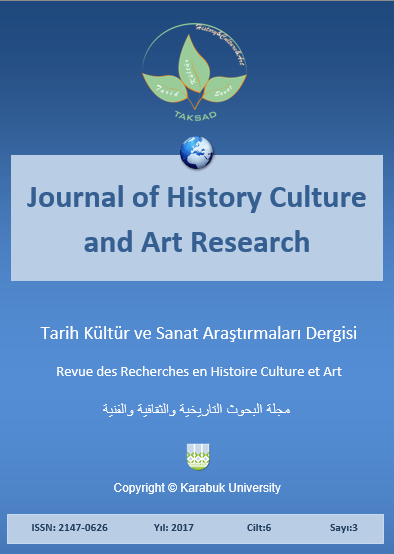A Comparison on the Consumption of Cultural Goods among University Students
DOI:
https://doi.org/10.7596/taksad.v6i3.981Keywords:
Cultural Consumption, Gender, University Students, Modern Trends, Fashion.Abstract
The consumption of culture and cultural goods can be defined as an economic and political activity. The activity in its pure and creative form can lead to the creation of culture. Based on the new developments in the world, the role of the university and the student has changed. In these new roles, cultural element is very important. In other words, cultural consumption and lifestyle are based on the students’ cultural life and promote them to a level that can play the expected role. This study aimed to compare the amount and type of cultural goods consumption in Marine Science and Technology University students, by taking three variables into account: gender, field of study and location. These findings could lead to cultural politics and communications in such a way that provide proper distribution of cultural products and cultural knowledge of students based on personal consumption data and regard necessary measures in the field of distribution of goods between different groups of students to create more opportunities to students that they are interested in. The results suggest a significant difference among students regarding academic, cultural, and social life. This study depicts these differences.
References
Bihagen, E. & Katz-gerro, T. (2000). Culture consumption in Sweden: The stability of gender differences. Poetics, 27(5), 327-349.
Cabal, A. B. (1993). The University as an Institution Today. UNESCO.
Elyasi, M.; Pardedar, F.; Tarshizi, S.; Khoshfar, G. & Danko, M. (2011). Factors affecting cultural consumption among youth. Community cultural studies, 2(2), 55 -76.
Fazeli, M. (2007). Picture of cultural life style of university students. Cultural Research, 1(1), 175-198.
Ghasemi, V.; Ganji, M. & Moradveisi, R. (2013). The impact of gender differences in use of cultural goods and Leisure Time. Social and psychological studies of women, 11(1), 93-122.
Ghazi Tabatabie, M.; Kalantari, A. & Nasimafza, A. (2014). Comparative evaluation of cultural consumption in cities and villages. Community cultural studies, 5(3), 87 -107.
Katz-gerro, T. & Sullivan, O. (2002). Leisure, Tastes and Gender in Britain: Changes from the 1960s to the 1990s. University of Haifa.
Kazemi, A. (2008). Three paradigms in the study of cultural consumption: in cultural studies, cultural consumption, everyday life in Iran. Tehran: Jameshenasan.
Moayedfar, S. (2004). Sexual differentiation of the villagers at work, leisure, activity and consumption of cultural goods. Iranian Sociological, 5(2).
Rabie, A. & Niroomand, M. (2016). Purchase and consumption pattern of Iranian goods in Urban and rural customers. Exploration Management, 15, 1-20.
Rashidpour, A. (2009). The study of cultural consumption among students Lorestan Province. Cultural management, 3(6), 55 –78.
Seifolahi, S. & Arshadi, J. (2015). Studying the process of transformation cultural consumption and social factors influencing consumption causes. Social Development Studies, 7(4), 137-154.
Share Pour, M.; Salehpour, S. & Fazeli, M. (2002). Relationship between academic education and community needs. Institute of research and planning in higher education.
Univesity and Community (1998). Institute of research and planning.
Downloads
How to Cite
Issue
Section
License
All papers licensed under Creative Commons 4.0 CC-BY.- Share — copy and redistribute the material in any medium or format
- Adapt — remix, transform, and build upon the material for any purpose, even commercially.
Under the following terms:
Attribution — You must give appropriate credit, provide a link to the license, and indicate if changes were made. You may do so in any reasonable manner, but not in any way that suggests the licensor endorses you or your use.
- No additional restrictions — You may not apply legal terms or technological measures that legally restrict others from doing anything the license permits.







